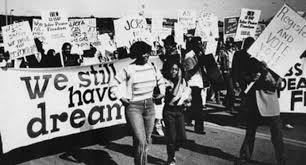One of my early posts discussed Beryl Burton.
She was one of the dominant competitive cyclists of her time. Not one of the dominant female cyclists, mind you: one of the dominant cyclists.
Whether or not she could beat most male cyclists of her time wasn't a matter of speculation: It was a settled answer. Among other things, for two years in the late 1960's, she held the distance record for twelve hours. Mind you, she didn't beat the old record by a few yards: Her 277.25 miles was five miles more than any other cyclist, male or female, had ridden over that amount of time.
I am mentioning her in relation to something that only indirectly relates to cycling or, more precisely, women's cycling. When the US Women's National Team in soccer (football to the rest of the world) won the World Cup in 2015 and 2019, some wondered whether they could beat most men's squads. That question seemed especially relevant given that the team's star, Megan Rapinoe, grew up playing on boys' teams against other boys’ teams.
This year, the team won its group. Last week, however, for the first time in the history of the tournament, the US Team lost in the Round of 16. While self-styled "patriots" like the ones at Faux, I mean Fox, News and Donald Trump are using the occasion to display their prejudice against women, LGBTQ people and "wokeness," the question remains of whether that team, at its peak, could play against the US men, who haven't had nearly as much success internationally. Some also wonder whether teams like Sweden's, Japan's and perhaps those of England, France or the Netherlands might be as good as, or better than many men's teams.
Well, such a question is not new. In fact, another women's team answered it a century ago.
During World War I, large numbers of British men--many of whom just happened to play football--went off to fight. That meant women kept guns, locomotives and other machinery running--and rolling off factory lines. (Think of them as forerunners of "Rosie the Riveter" in World War II USA.) During their lunch and tea breaks, some of those women played pickup games in the factories’ lots.
Some of them became quite good--enough to beat young male apprentices. Such was the case of the women who worked in the Dick, Kerr and Company factory in the northwestern city of Preston, which had a well-regarded men's professional team. An office administrator, Alfred Frankland, recognizing their talents and skills, organized them into a team that played exhibitions to raise money for injured servicemembers.
Soon, spectators weren't showing up only out of curiosity: If nothing else, English fans know when they're seeing good football. They filled venues like Old Trafford (home of Manchester United), Liverpool's Goodison Park (Everton) and London's Stamford Bridge (Chelsea). They beat not only local factory and semi-professional teams, they also took matches from France's national squad during an international tournament in 1920.
Whatever the English fans thought of those women, the sport's governing authorities were not amused. The following year, the Football Association banned its members from allowing women's teams to use their fields. Their stated reason: "[T]he game of football is quite unsuitable for females and should not be encouraged." Some have speculated that the F.A. feared that the popularity of teams like Dick, Kerr and Company would eat away at the attendance--and profits--of men's teams.
The Dick, Kerr women, undeterred, went on tour--to North America. Upon arrival in Canada, that country also barred them from playing. The United States--which was experiencing a brief soccer boom (only baseball, bicycle racing and boxing were more popular) proved more receptive, though there were no organized women's teams. So they played nine games against men's teams of the professional American Soccer League (yes, such a thing existed!). winning three, losing three and playing to three draws.
While public reception of them was generally favorable, some newspaper coverage reflected stereotypes of the time: One account referred to them as "brawny Amazons" and another was accompanied by ads for corsets, skin cream and dishwashing soap. Perhaps the worst indignity was this: The money their games raised was used to cover the expenses of sending the US men's soccer team to the 1924 Olympics in Paris.
But, through such difficulties, the women continued to play, renaming themselves the Preston Ladies in 1926. The F.A. finally lifted its ban in 1971--some six years after the Ladies played their last game.
In the team's history, they compiled a record that I doubt any other team--male, female or otherwise--could boast: They lost only 24 of the 828 matches they played. Perhaps most impressive of all was a record set by the team's best-known player. Lily Parr, a 6 foot chain-smoker "with a kick like a mule" netted 43 goals in her first season. When she retired three decades later, in 1951, she was believed to have scored 900--many more than any other English soccer player of any gender identity. In 2002, she would also become the only female player enshrined in the English Football Hall of Fame's inaugural class.













































